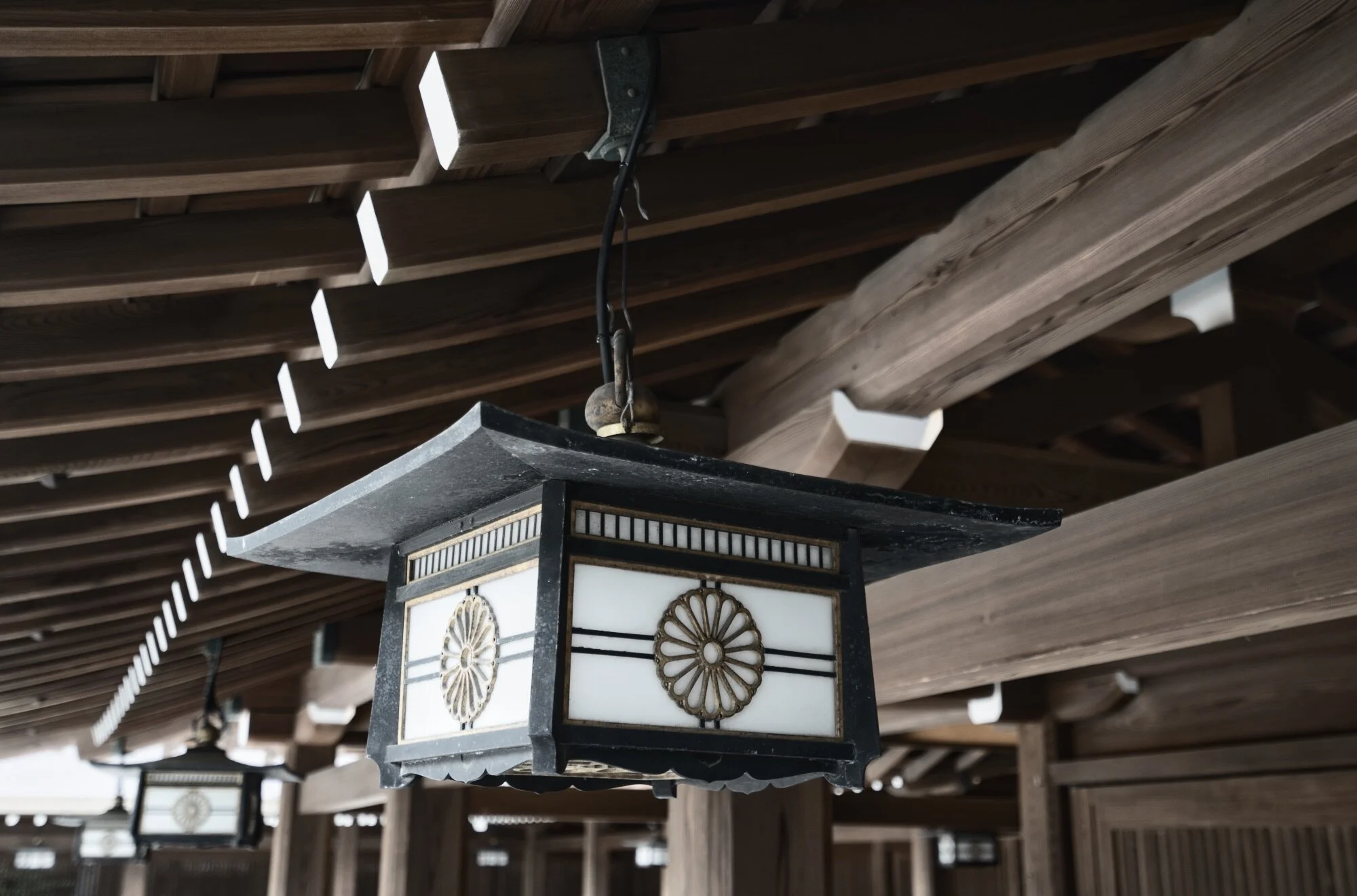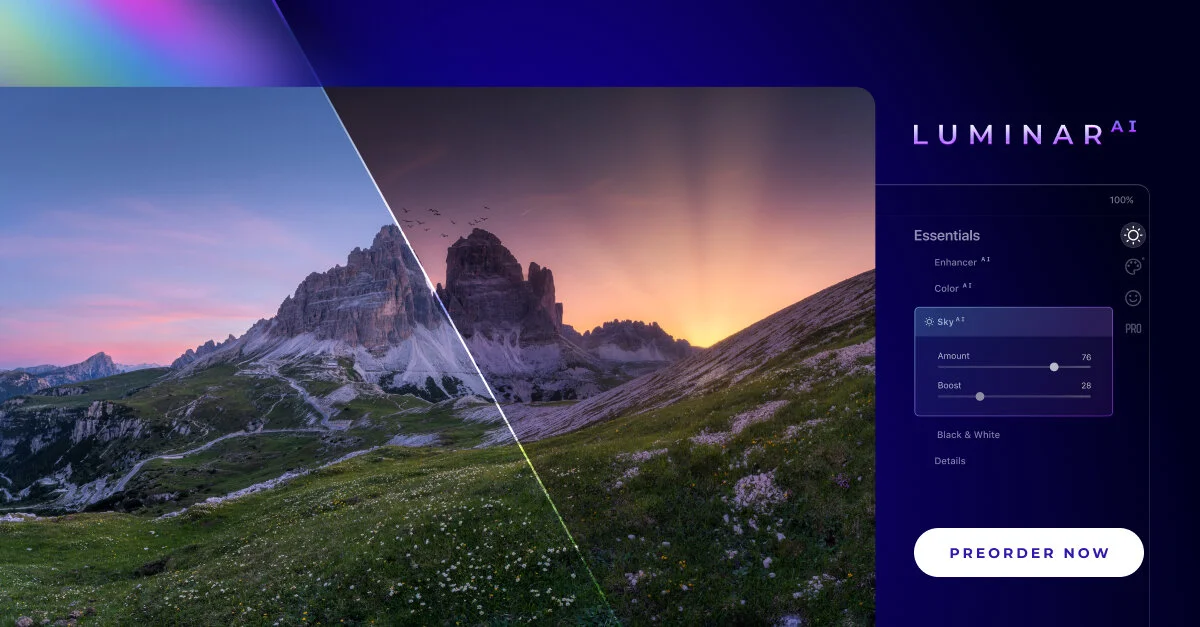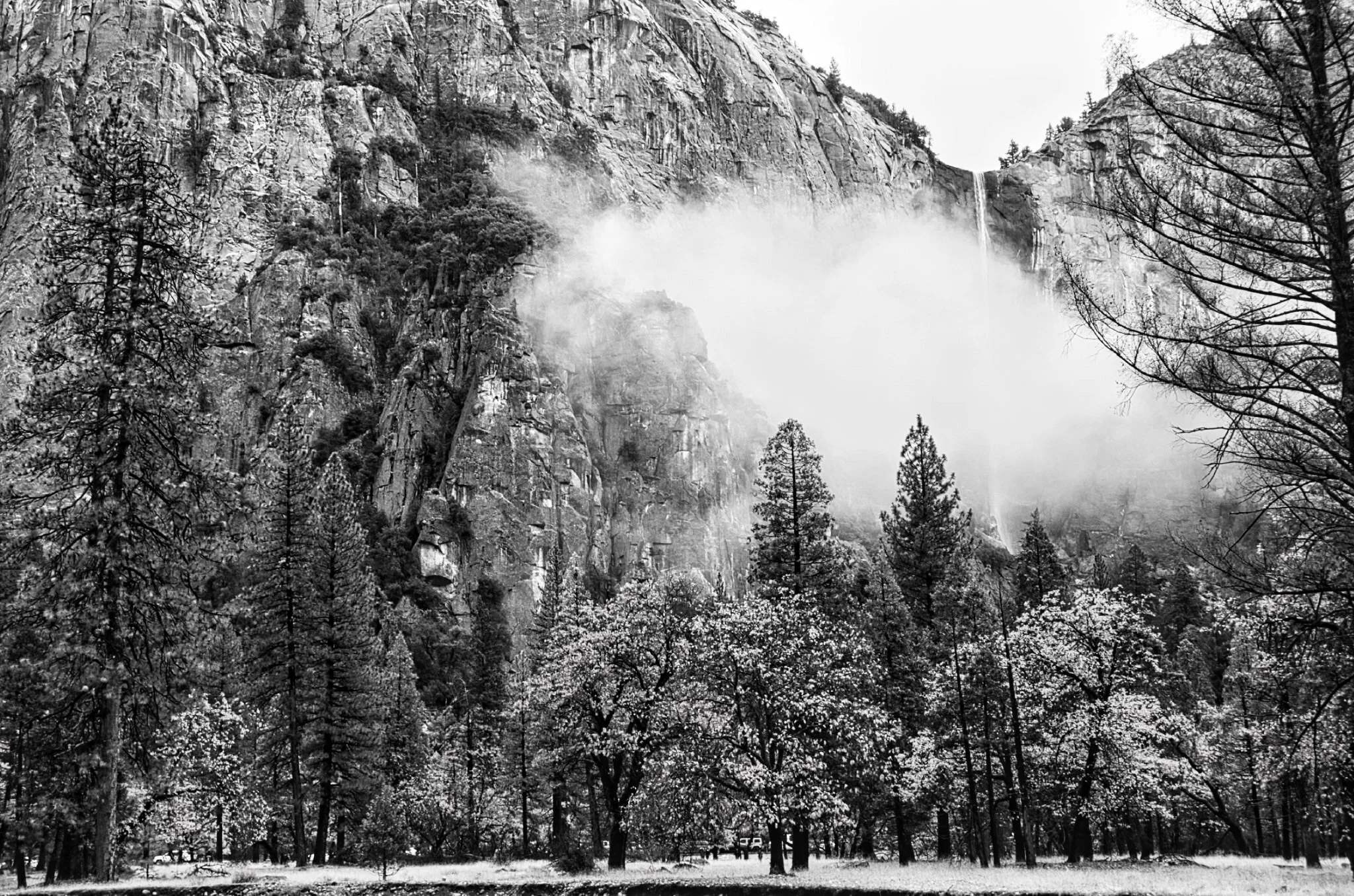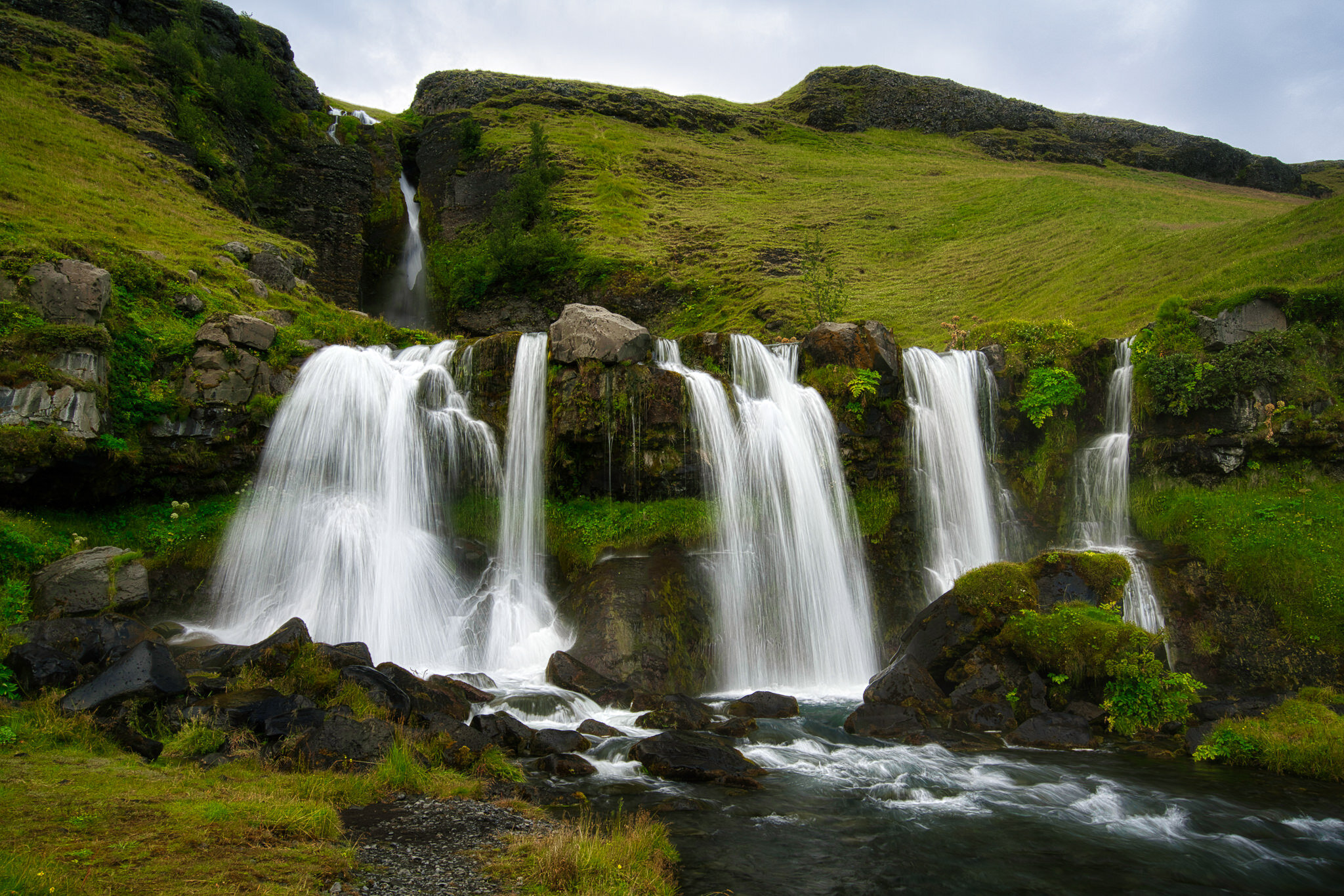Luminar AI - A Deeper Look
Skylum announced Luminar AI yesterday. The announcement pages suggest some information. I also attended a product briefing earlier in the week where some additional details were shared. Nobody outside of Skylum has the software yet, so there is a level of guesswork here. What follows is based on what we know today about the product. It may change. Ok … have I provided an appropriate caveat? I think so :-)
For the cut-to-the-chase types in the crowd, my summary is this:
I'm quite excited about the editing power of Luminar AI. The new features look very, very good. I've always been a fan of their glow looks and I am eager to start working with the Atmosphere and Mood tools to see what they can do. Templates are also very intriguing. And the hints of user interface improvements for tools that rely on loading other images (skies, textures, etc.) will be most welcomed.
The lack of attention to the catalog is disappointing. Also, no path forward is planned to migrate a Luminar 4 catalog into Luminar AI. It is a clear indicator that Skylum's focus is editing. That tells me, from a wholistic workflow perspective, Luminar AI is great as a plug-in to other tools like Lightroom or Apple Photos. It is also perfectly suitable as a "one and done" editor where changes are baked into a final image. However, maintaining a multi-year library with non-destructive edits intact in a Luminar catalog .
Luminar AI is coming this holiday season. Early bird pricing is US$69 for a single license, US$79 for a dual license (two machines). If you are an existing Luminar user, or using the latest version of Aurora HDR, you’ll save US$10 with an upgrade price. Hint: On the Luminar AI landing page, open the FAQ and find the link labeled “loyalty pricing” to get the upgrade.
Luminar AI is available now for preorder from Skylum and comes with a 30-day money back guarantee. You have a full 30 days after Luminar AI ships to try it out and make sure it suits your needs.
What Luminar AI Is … And What It Isn’t
Luminar AI is an all-new photo editor with AI at its core. Luminar’s editing tools employ AI to quickly edit and style photos. Time consuming edits are simplified with easy to use tools. Luminar AI adds even more AI-powered editing tools. The focus is on the results. Get to your completed photo faster.
Furthermore, Skylum has embedded artificial intelligence even deeper into the application engine. Luminar AI will suggest stylistic treatments for your images based on the content of your photos. These are called Templates (more about this intriguing feature below).
Also, Luminar AI keeps control with you, the photographer. You can always go into the editing tools, fine tune colors, adjust details, and craft your signature style. The AI power is about getting your to your finished image faster. I’ve been harping on this for years… the tools don’t matter, the final photo does. Whatever tool chain helps you get to your final image more quickly is goodness.
Luminar AI is not an upgrade to Luminar 4 or earlier versions. It is a new application. There is no planned upgrade path from earlier versions of Luminar to Luminar AI. Some additional thoughts on this below. Luminar Looks can be migrated to Luminar AI, with the exception of tools in the “Deprecated” category in Luminar 4.
Luminar AI works as a standalone application on Windows and macOS. It also runs as a plug-in to Lightroom Classic, Photoshop, and Photos for macOS. The single application works in both modes - there is not a separate plug-in for Luminar AI. Luminar AI is not supported as a plugin for Photoshop Elements or Apple Aperture. The minimum operating system versions are stricter for Luminar AI. Operating System Windows 10 (only 64-bit OS) or macOS 10.13.6 are the minimum operation systems supported. Windows 7 & 8 are not supported. Nor is macOS 10.12 supported. Full details are on the Luminar AI announce page.
What’s Cool About Luminar AI
Skylum is certainly all in on AI powered editing. Computational photography. Whatever you'd like to call it. Their focus is squarely on simplifying the editing process. Luminar AI doubles down on that.
For landscape photographers, the Atmosphere, Color Harmony, and Mood tools are intriguing. The others touted for nature photography are refinements on what we already have. For portrait photographers, there are new Body and Bokeh tools. That's in addition to the tools we are accustomed to from Luminar 4 for eyes, faces, and skin.
There is also a new Composition AI tool. It aims to give you the most flattering crop on an image based on the elements in your photo. I see this as both a useful tool to speed up processing and as a good educational tool to train your photographic eye. Try a crop on your own first, then compare it against the AI tool. And then use that feedback for your next outing with the camera, improving your initial capture! :-)
I do very much like the interface change (at least what's suggested by the screen shots) that shows thumbnails for replacement skies. I hope that approach extends to other tools that use overlays like Augmented Sky, Textures, etc. Seeing the thumbnails in the tool speeds up workflow.
What’s Intriguing About Luminar AI
In a word, Templates. A Template is the rough equivalent of a Look in Luminar 4. That's well and good, and expected. What is interesting is Luminar AI will suggest Templates to apply to your photo based on the elements in your photo. Rather than scanning through collections of Looks, the editor itself will present options it thinks will work best with your photo. This could be a good source of inspiration if you’ve ever been stuck on where to begin with a photo.
There is a touch more we can infer from the user interface mockups shown. Also, notice the toolbar is Catalog - Templates - Edit - Publish. That suggests a recommended workflow, with Templates in a prominent role. Especially with Luminar AI suggesting which templates may work well for your photo. Of course, you the photographer always have the final say. Luminar AI isn’t about giving up control, it’s about speeding up your workflow.
Something else I picked up in the product briefing is the removal of layers. In the context of Skylum's vision - make editing simple - I can understand this. Layers take time to learn. Layers also tend to slow down editors. There is simply more pixels for an application to manage. I put the removal of layers in the 'intriguing' category because for those of us that use and enjoy layers, Luminar AI will have a Local Adjustment tool. This tool will accomplish what we would otherwise do with a layer. You can make specific adjustments for individual areas or people. You can overlay textures or make targeted adjustments. Local adjustments are also easier to sync with multiple photos and can be stored in a Luminar AI Template.
What’s Disappointing About Luminar AI
There are zero changes in the catalog system for Luminar AI. It is exactly the same as Luminar 4. If you were holding out for keywords or IPTC fields, I don't see it happening. Those features have been on Skylum's roadmap for a couple of years now. If they are still there, I'll consider them footnotes at best.
What’s most disappointing is there is no migration of a Luminar 4 catalog to a Luminar AI catalog. Luminar AI is an entirely new product. An entirely new catalog. And as of this writing ... never the twain shall meet. Since Luminar Looks can be migrated to Templates, maybe you can kinda-sort manually migrate some images that only use Looks by re-processing them in Luminar AI. However, you cannot wholesale transfer your non-destructive edits from Luminar 4 to Luminar AI. I assume the same is true for any Albums you have created. If you are using Luminar 4 as your cataloging system, you can continue to do so, but frankly that is relatively short term. As with all software, Luminar 4 will age and inevitably stop running on future computer systems (a few years).
You can certainly leverage your folder organization with Luminar AI. Point Luminar AI at the same set of folders as Luminar 4 and they’ll be cataloged in the same way (minus albums, I’m assuming). However, those same photos viewed in Luminar AI will be unprocessed. Non-destructive edits made in other versions of Luminar will not be visible in Luminar AI. Of course, there is always the choice to export your finished Luminar 4 work as archival TIFFs and catalog those in Luminar AI. The caveat - your edits are “baked” into the exports and re-editability is gone,.
For me, I’ll continue to leverage Luminar AI’s editing power and manage my library in other tools. If you are an Adobe user, you could also consider round-tripping through Photoshop with Smart Objects to maintain re-editability in Luminar AI. (I am making the assumption Luminar AI will continue to work with Smart Objects.)
Once again, the information we have is incomplete and the product may change before its release. As we approach the holiday season of 2020, I’m sure more of our questions about Luminar AI will be answered. I would very much like to see Skylum pivot on their cataloging decision and provide an upgrade path for a Luminar 4 catalog.













